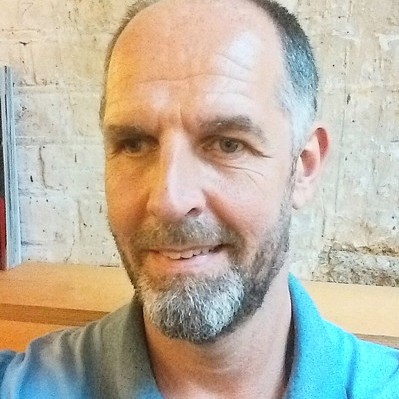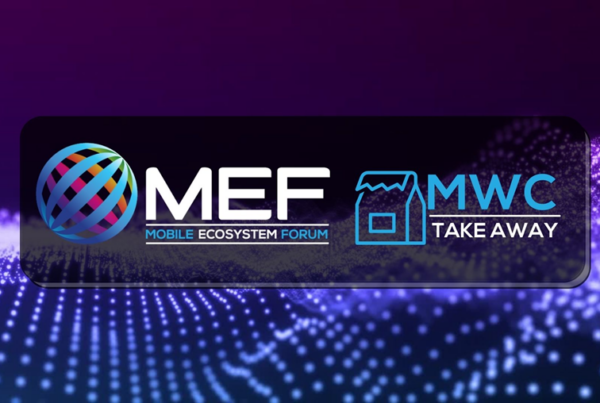Everyone is welcome at Mobile World Congress: drones, cars, smart meters, connected dresses, watches. Even some phones. Tim Green was there too. And here is what he saw…
Liberals should love MWC.
All over the world, people are swinging to the right. They want to preserve their indigenous identities and seal borders. They don’t want any more outsiders coming in.
But in MWC Land, everyone is welcome.
The government of MWC Land (aka the GSMA) has an open border policy. When refugees from other regions (Car Land, Drone World, United States of Wearable, IoTesia) arrive at Europa Fira station, the GSMA simply says: you’re very welcome.
And in they come.
It’s easy to see why. The GSMA knows that the local population (a race known as ‘the handsets’) is getting a little comfortable.

The handsets don’t seem to do innovation as well as hungry newcomers. They don’t want to get up early to do the dirty jobs either.
Notifications? Let the watches do them!
The handsets also seem to get exhausted by 3 in the afternoon. They sleep for longer.
And they are not breeding as fast as they used to either. The Samsung family, for example, failed to have any offspring this year.
Of course, the process of integration takes time. The GSMA houses the newcomers in a crowded enclosure it calls Innovation City, which actually has a watchtower.
 But in time the new arrivals will happily integrate and make way for more…
But in time the new arrivals will happily integrate and make way for more…
Anyway, enough of this nonsense. For the last four days, I’ve been pounding the vast unforgiving halls of the Fira on behalf of the MEF among these open-minded hordes.
Here’s what I learned…
The new thing is the old thing #1: Nokia 3310
The crowds were four deep around the table for Nokia’s 3310 re-boot. Amazing. It’s 17 years old. If you want a cheap Nokia feature phone, you can get a perfectly love Nokia 130 for about $30 already.
But that’s not the point. The point is PR. Had the new Nokia owner HMD Global simply launched a bunch of Android smartphones (which it did), it would have merited fleeting interest. A re-imagined 3310? Hold the front page.
Will it sell? I suspect it will – to people going on holiday or to music festivals. The combo of battery power, price, rugged design and (most important) nostalgia will see to that. Inevitably, this will prompt the observation about people are rejecting the smartphone life in the quest for something simpler. Ignore it. It’s nonsense.
Still, at least the 17 year old Nokia 3310 achieved one important milestone: it became the first millennial to attend MWC.
The new thing is the old thing #2: BlackBerry
The new owner of BlackBerry, TCL, must have been a little peeved when the Nokia 3310 was announced. Surely its KeyOne would be the nostalgia story of MWC. But Nokia got there before it. By about seven years.
 TCL’s big gamble is the physical keyboard. The KeyOne has unexceptional Android inside, so it’s all about the qwerty below the screen. Are we ready to go back to that?
TCL’s big gamble is the physical keyboard. The KeyOne has unexceptional Android inside, so it’s all about the qwerty below the screen. Are we ready to go back to that?
The new thing is the old thing #3: Operator content offerings
Remember operator walled gardens? Carrier-owned music stores? MNO games portals? We thought they all died in 2007, right? Well, yes. But now they’re coming back. Kind of. Many operators are trying to beef up their data plan revenues and combat churn by building bundles of exclusive (third party) content.
MEF member Syntonic is helping to drive this with its sponsored data play. Another MEF member Viacom is touring the world doing these kinds of deals. And onstage at MWC, Netflix’s Reed Hastings talked warmly about partnerships with operators including Vodafone, Orange, and Telecom Italia.
The operator’s other new thing: trust
Telefonica’s top brass have been vocal in the past about helping customers take charge of their own data. This week, it did something concrete about it. It launched Aura – a big data service pitched at consumers (rather as its Luca division serves businesses). Aura includes a voice assistant front end but also lets consumers find out what data they are sharing with and through Telefonica, and take control of it too.
Watches are so 2015
Two years ago every wall space between Espanya station and the Fira was plastered with ads for smartwatches. This year? Not so much. Let’s be honest, the connected watch has failed. According to IDC, shipments declined 52 per cent in Q3 2016.
Probably the only big announcement at MWC 2017 was the Huawei Watch 2, which continued the trend for smartwatches that look like chunky ‘real’ ones rather than digital gadgets. It also has a SIM card slot so it doesn’t have to be tethered to a phone.
 It’s the bezels, stupid
It’s the bezels, stupid
Smartphone makers have pushed smartphone innovation to the limit. So now the only thing left to do is push it to the edge. Yes, in the absence of anything radical design-wise, the OEMs are simply trying to make displays a bit like infinity pools. Hence the disappearing bezels of the LG G6 and Huawei P10.
Flashing the backside: Alcatel A5 LED
Given how similar all smartphones look like from the front, Alcatel decided to focus on the back. Its A5 is first smartphone to have a rear with flashing LED lights. And the display even changes depending on the type of notification.
Google Assistant goes wide
Google is driving hard into voice assistance as the next big mobile interfaces. But its Google Assistant product has only been available on Pixel phones to date. This week it announced the feature is coming to smartphones running Android 7.0 Nougat and Android 6.0 Marshmallow. That means it will be available to all high-end Android phone owners.
Google takes RCS into A2P messaging
As most readers will know, RCS was supposed to be the rich media, next generation of SMS. But it got stuck in the committee rooms of the world’s operators. Then in 2015, Google took charge by buying the firm that was behind the tech, Jibe.
This week, Google announced more progress. It confirmed Telenor would offer an RCS powered messaging app to its 214 million subscribers, and then unveiled a scheme to make RCS work for enterprises.
 Its Early Access Program will help businesses learn about the technology, and Google confirmed MEF members such as CLX Communications and OpenMarket as official partners.
Its Early Access Program will help businesses learn about the technology, and Google confirmed MEF members such as CLX Communications and OpenMarket as official partners.
The unfortunate timing of PWC
The PWC brand was all over MWC in 2017. It was on every paper cup. And always accompanied by jokes about containing the wrong thing. It’s tea! No wait a minute, coffee…
Back to reality for virtual reality
Last year, there was a virtual reality rollercoaster with ‘real’ seats that shook violently. People queued for hours. This year, VR headsets were everywhere, but the queues weren’t. The tech, great as it is, still makes you look stupid and locks you away from the world. I don’t buy it as a mainstream experience.
Sci-fi alert – instant translation headphones
Yes, it’s right out of Isaac Asimov. UK company Mymanu showed off what it calls the world’s first in-ear earphones that translate on the go. They can recognise 37 languages in real time. But only if you have the app. And the person you’re talking to is wearing a pair too. Still amazing though.
 Up periscope: has Oppo just solved mobile camera zoom?
Up periscope: has Oppo just solved mobile camera zoom?
Most smartphone makers are very fixated on the camera. Obvious, given the important of photography to an Instagram-obsessed user base. But zoom remains a big sticking point. Simply, digital zoom produces poor quality grainy pics that cannot compete with the optical zoom of a traditional SLR camera.
Rising phone maker Oppo thinks it has the answer. It uses a periscope-like system to give its camera an optical zoom function. I tried it, and it was excellent. It’s a prototype for now, but could have a major impact.
No airpods, occasional SnapChat spectacles
At the airport, I saw a guy wearing Apple Airpods. The people I was with knew him. Inevitably, they said, he worked for Apple. That was the first time I had seen Airpods ‘in the wild’. And the last. No sightings at MWC.
And there was no sign of the ‘hearable’ trend (suggested by the Sony Xperia Ear in-ear assistant from 2016) going anywhere.
I did see a handful of people in SnapChat spectacles. But not many. In fact, there was one big eyewear announcement: Deutsche Telekom unveiled a partnership with Zeiss to make glasses that display information, apps and images.
Interesting, but it seems the next big era of connectivity – from handheld devices to wearables – is still ages away.
There was a scary watchtower
The GSMA Innovation City showcased all the exciting IoT stuff. There were cars and drones. There was also some kind of mast. It looked like a watchtower from The Great Escape. I kept expecting to see people dropping dirt from their trouser legs.






excellently written and informative take on your MWC thoughts.